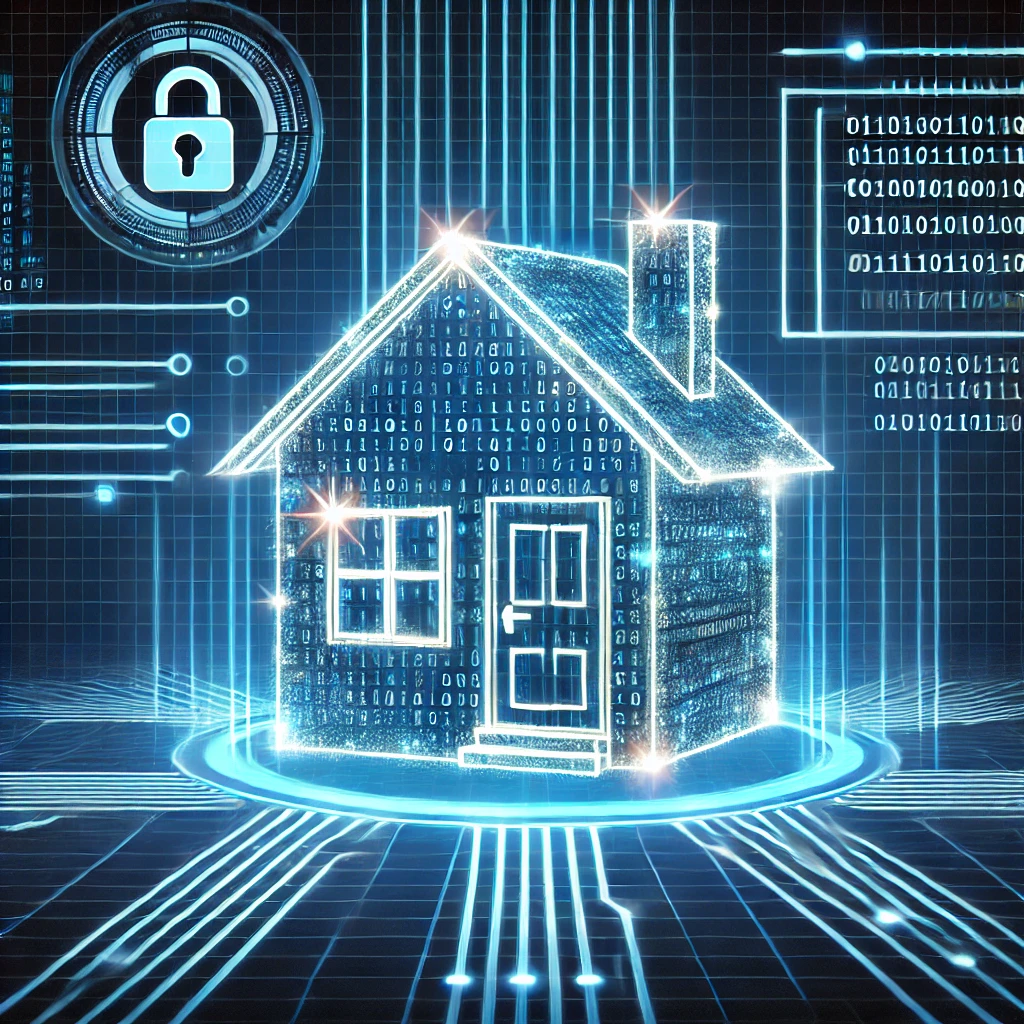The rise of smart homes has been a transformative force in modern living, integrating technology into our daily routines for enhanced convenience, security, and energy efficiency. As more devices and systems become interconnected, the importance of reliable connectivity in smart homes cannot be overstated. Among the various connectivity options, cellular connectivity is gaining prominence due to its numerous advantages. In this article, we explore the benefits of “Cellular Connectivity in Smart Homes” and how it plays a crucial role in the seamless operation of smart devices, ensuring consistent and secure communication.
As the concept of smart homes continues to evolve, having a dependable connectivity solution is essential. Wi-Fi and Ethernet have been the traditional go-to options, but they come with limitations such as signal interference and limited coverage. Cellular connectivity, on the other hand, offers a more stable and wide-ranging alternative. We will delve into the specific advantages of cellular connectivity, such as its reliability, extensive coverage, and reduced interference, making it an ideal choice for smart home environments.
Furthermore, the security of smart homes is a top priority. Cellular networks provide robust security features that protect data transmission and guard against hacking and breaches. This article will compare cellular connectivity with other technologies like Wi-Fi, Ethernet, Zigbee, and Z-Wave, highlighting why cellular is a superior option for secure and reliable smart home connectivity.
Finally, we will explore practical applications of cellular connectivity in smart homes, from remote monitoring and control to emergency systems and smart appliances. Additionally, we will look at future trends, such as the impact of 5G and the integration of IoT devices, which promise to further enhance the capabilities of smart homes. By the end of this article, you will understand why cellular connectivity is a critical component of modern smart homes and how it can elevate your smart home experience.
Advantages of Cellular Connectivity in Smart Homes
One of the key advantages of cellular connectivity in smart homes is its reliability and stability. Unlike Wi-Fi, which can be prone to signal interference and congestion, cellular networks offer a dedicated communication channel, ensuring that smart home devices maintain a consistent connection. This stability is crucial for devices that require constant connectivity, such as security systems and smart locks.
Another significant benefit of cellular connectivity is its wide coverage area. Cellular networks can reach areas that traditional Wi-Fi or Ethernet connections cannot, including remote or large properties. This extensive coverage ensures that all smart home devices, regardless of their location, can operate seamlessly and stay connected.
Reduced interference is another advantage of using cellular connectivity in smart homes. Cellular networks operate on different frequencies than typical home Wi-Fi networks, minimizing the likelihood of signal interference. This separation of frequencies allows smart home devices to communicate more reliably, enhancing the overall performance of the home automation system.
Overall, the reliability, wide coverage, and reduced interference make cellular connectivity an ideal choice for smart homes, ensuring that devices remain connected and functional under various conditions.
Enhanced Security with Cellular Connectivity
One of the standout benefits of cellular connectivity in smart homes is the enhanced security it provides. Cellular networks use advanced encryption methods to ensure secure data transmission, making it much more difficult for unauthorized parties to intercept or tamper with the data. This level of security is crucial for protecting the sensitive information that smart home devices handle.
Cellular connectivity also offers robust protection against hacking and breaches. The security features inherent in cellular networks make them less susceptible to cyber-attacks compared to traditional Wi-Fi networks. For example, cellular networks can implement strong authentication protocols and regularly update their security measures to guard against emerging threats. This is particularly important for smart home applications such as security cameras, smart locks, and alarm systems, where the integrity of the data and the reliability of the connection are paramount.
Moreover, several secure smart home applications benefit from cellular connectivity. Security cameras that stream live footage, smart locks that control access to the home, and alarm systems that notify homeowners of intrusions all require secure and reliable connections to function effectively. Cellular networks provide the necessary security infrastructure to support these applications, ensuring that smart homes remain protected against potential threats. By leveraging the enhanced security features of cellular connectivity, smart home owners can enjoy peace of mind knowing that their devices and data are well-protected.
Comparing Cellular Connectivity with Other Technologies
When evaluating connectivity options for smart homes, it’s essential to compare cellular connectivity with other prevalent technologies such as Wi-Fi, Ethernet, Zigbee, and Z-Wave to understand the unique benefits it offers.
Wi-Fi
Wi-Fi is a widely used connectivity option in smart homes due to its convenience and ease of setup. However, Wi-Fi networks can be prone to signal interference from other electronic devices and neighboring networks, which can lead to inconsistent connectivity. Additionally, Wi-Fi coverage may be limited, particularly in larger homes or areas with thick walls. This can result in dead zones where smart home devices lose connectivity. Cellular connectivity, on the other hand, provides a more reliable and stable connection with broader coverage, ensuring that all devices remain connected even in challenging environments.
Ethernet
Ethernet offers a stable and fast connection, making it a preferred choice for devices that require high bandwidth and low latency. However, Ethernet’s reliance on physical cables limits its flexibility and scalability in smart homes. Installing Ethernet cables throughout a home can be intrusive and costly. In contrast, cellular connectivity offers the stability of Ethernet without the need for extensive wiring, providing a flexible solution that can easily accommodate the addition of new devices and changes in the home layout.
Zigbee and Z-Wave
Zigbee and Z-Wave are popular for short-range communication within smart homes, particularly for connecting sensors, lights, and other low-power devices. While these technologies are energy-efficient and support mesh networking, they can suffer from limited range and potential interference from other wireless devices. Additionally, the interoperability between Zigbee and Z-Wave devices from different manufacturers can be inconsistent. Cellular connectivity offers a robust alternative with greater range and better interoperability, ensuring that all smart home devices can communicate seamlessly regardless of their location or brand.
Benefits of Cellular Connectivity
The advantages of cellular connectivity over these other technologies are significant. Cellular networks provide reliable and stable connections with extensive coverage, reducing the risk of signal interference and dead zones. The enhanced security features of cellular networks protect against hacking and breaches, making them a secure option for critical smart home applications. Additionally, cellular connectivity offers the flexibility to easily scale and adapt to changing needs without the constraints of physical wiring or limited range.
By choosing cellular connectivity, homeowners can ensure that their smart home devices operate reliably and securely, enhancing the overall performance and user experience of their smart home systems. For more insights on choosing the right carrier technology for IoT devices, explore our detailed guide on Choosing the Right Carrier Technology for IoT Devices. Additionally, consider the implications of the 2G and 3G Network Sunset for your smart home connectivity solutions.
Practical Applications of Cellular Connectivity in Smart Homes
Remote Monitoring and Control
Cellular connectivity enables homeowners to remotely monitor and control their smart home devices. This includes adjusting thermostats, monitoring security cameras, and managing lighting systems, all through a reliable and secure connection. With cellular connectivity, homeowners can stay connected to their smart home systems even when away, ensuring peace of mind and convenience.
Emergency Systems
Smart home emergency systems, such as fire alarms and medical alert systems, greatly benefit from the reliability and wide coverage of cellular connectivity. These systems can send alerts and notifications without relying on local internet connections, ensuring timely responses in critical situations. Cellular connectivity provides a dependable communication channel for these life-saving devices, making them more effective in emergencies.
Smart Appliances and Energy Management
Smart appliances and energy management systems leverage cellular connectivity to optimize performance and efficiency. For instance, smart refrigerators can notify homeowners of maintenance needs, while energy management systems can adjust power usage based on real-time data. Cellular connectivity ensures these devices have a stable and continuous connection, enabling them to operate efficiently and provide valuable insights for better energy management.
Future Trends in Smart Home Connectivity
5G and Its Impact on Smart Homes
The advent of 5G technology is set to revolutionize smart home connectivity by providing faster speeds, lower latency, and increased capacity. This will enable more advanced applications, such as real-time video streaming and enhanced automation, ensuring seamless and efficient operation of smart devices.
Integration with IoT Devices
The integration of cellular connectivity with IoT devices will further expand the capabilities of smart homes. Enhanced connectivity will allow for more sophisticated automation and control, making smart homes more intuitive and efficient. This integration will support a broader range of devices and applications, improving the overall smart home experience.
Emerging Technologies and Innovations
Emerging technologies such as edge computing, artificial intelligence (AI), and machine learning are poised to significantly impact smart home connectivity. These innovations will enable smarter data processing and decision-making at the device level, enhancing the functionality and responsiveness of smart home systems. Additionally, advancements in sensor technology and data analytics will drive further innovation, providing more personalized and efficient smart home solutions.
Conclusion
In summary, cellular connectivity offers significant advantages for smart homes, including enhanced reliability, wide coverage, and robust security. It outperforms other technologies like Wi-Fi, Ethernet, Zigbee, and Z-Wave in various aspects, making it a superior choice for modern smart homes. As smart home technology evolves, the integration of 5G and IoT devices, along with emerging innovations, will further enhance the capabilities and efficiency of these systems. For homeowners looking to optimize their smart home experience, considering cellular connectivity is a crucial step.
To learn more about how cellular connectivity can enhance your smart home, explore Wagtel’s smart home connectivity solutions.






